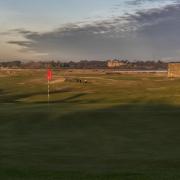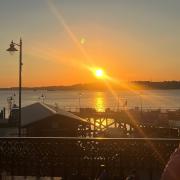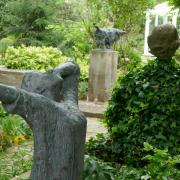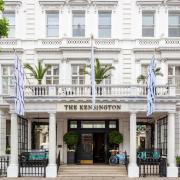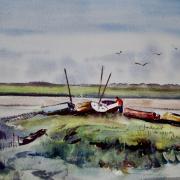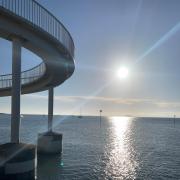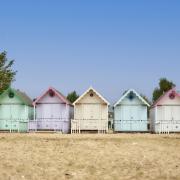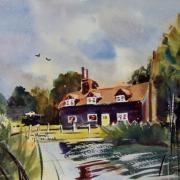Fires, crashes, deaths, disaster - no matter the knock-backs over the decades nothing has managed to sink Southend’s famous pier. After almost 150 years, the landmark 1.3-mile structure is still one of Essex’s top attractions.
Much has been written about the important role that the structure played during the Second World War and about the many famous faces who have filmed here (largely thanks to Jamie Oliver’s café at the end of the pier), but here are 15 facts about the world’s longest pleasure pier that you might not be aware of…
1. When the iron pier was being constructed in the late 1880’s to replace Southend’s original wooden pier, it wasn’t plane sailing. Not everyone was in favour of the project due to the cost. There was increasing concern that the timber used for the planks on the walkway were rotting with wood worm. The project was almost halted several times and council meetings got very heated when the issue was raised. The iron pier was finally completed in 1889, at a cost of almost £70,000 (equivalent to around £10million today).
2. In October 1874 crowds of tourists were left horrified after a ‘fashionably attired gentleman’’ walked ‘with great speed’ to the end of the pier, took a revolver out of his coat pocket, pressed the weapon to his stomach and fired. He died on the spot.
3. In 1900 the pier was becoming so popular with visitors from east London that a new saying was doing the rounds: “When good West Ham councillors die, they go to Southend!” The appeal of the pier became so great that one newspaper printed an ‘interview with the Pier’. It took the form of a female visitor writing about her visit to Southend and asking the pier questions, to which it responded.
4. Back in July 1902 a party of 200 ‘bean feasters’ caused a huge rumble on the pier when they wanted to return to their steamer after a day out boozing in Southend but refused to pay the one penny toll to get back to their boat. They tried to force their way though and police had to be called to sort out the fracas.
5. In 1904 George Reeves, a hotel owner visiting Southend from London was travelling on the conductor’s platform on an electric car on the pier when he fell and grasped the brake-wheel. He was electrocuted so badly the fingers on his left hand were burned to the bone and his right hand was singed.
6. Many ships and barges have crashed into the pier over the years. In December 1907 A hay barge named ‘the Robert’ on its way from Rochford to Greenwich, slammed into the pier. The crew, including the captain and his dog, had to jump to safety. In 1908, a hulk ship named The Marlborough broke free of its mooring during aside of the pier. In 1933 the barge, Matilda Upton from Ipswich, collided with the pier.
7. In January 18, 1921, the pier was sliced in half by a 200 tonne ship named Violette. The motor-driven, three-masted Violette, which was laden with a cargo of 241 tons of iron girders and logs, crashed into the end of the pier with her engines at full throttle. The ship, which was carrying a crew of eight, was bound from Antwerp to London but had faced increasingly bad weather since she set off. The accident left a 180ft gap on the west side of the pier and dislodged countless wooden piles, causing more than £7,000 of damage.

8. In 1926 a woman named Genevieve Parker tried to drown her son by throwing him off the pier. The boy, named Peter, who was eight, was heard yelling “mummy mummy!” from the waters below. The 42-year-old mum was seen in a distressed state on the pier, pleading with people to save her son and saying “did I throw him in? I don’t know why I did it”. A man named Tom Purbrick who was at the end of the pier jumped in the water and saved the lad. The mother was taken away by police and Peter was looked after by the authorities. At a court hearing the mum yelled out to Peter as he walked into the court: “you still love mummy, don’t you?”. Little Peter didn’t reply. After a lot of legal wrangling she was remanded in custody.
9. In 1927 two huge oak chests were strapped to the end of the pier for an entire year. People were bewildered by why they were there and what was inside them. Lots of rumours about the contents spread but the truth was rather mundane. Inside the chests were hundreds of yards of British sisal hemp and manilla hemp- the materials needed to make rope. There were holes in the chests to let in the water at high tide. It was all an experiment to test the strength of the ropes and hopefully prove that British-made rope was just as good as imported rope and was strong enough to withstand the elements.
10. When the Second World War broke out the pier was closed to the public and was turned into HMS Leigh. Once it did reopen visitor numbers swelled – exceeding prewar levels and peaking at a colossal 5.75 million from 1949 to 1950. This new chapter brought new attractions to the pier including the Sun Deck Theatre, the Solarium Cafe, as well as amusements and a Hall of Mirrors.
11. In 1959, a fire destroyed the pavilion located at the shore end of the pier. Over 500 people were trapped on the other side of the blaze and had to be rescued by boat.
12. In 1962 the pier opened its new tenpin bowling centre. The 18- lane Excel Pavilion was a knockout success and within weeks special arrangements had to be made to open the bowling centre round the-clock. For several months 24-hour bowling lanes were in operation on the pier with people coming night and day to experience the thrill of bowling over the estuary.
13. In 1971 a child from Rayleigh was almost killed after plunging through rotting planking on the pier. Four-year-old Cheryl Byfield had playfully jumped off a bench onto the pier deck when the plank sea-sawed and tiny Cheryl fell through the gap and plunged 30ft into the water below. Fortunately, the tide was just deep enough to carry her to a stanchion and she clung on for dear life. She was plucked out of the sea by family members and taken to hospital for shock. An investigation into the accident was called for and the report uncovered several serious structural failings on the pier.
14. Part of the old wooden pier was saved and used to build the Southend Mayoral Chair in 1892. The ornately carved chair is on display at Porters in Southend
15. In June 1974 the pier was finally declared saved from the scrapheap. After mighty protests from residents who formed a Save Our Pier committee, the council - which wanted to pass plans to demolish the pier due to rising maintenance costs - agreed a £1.5 million investment over 10 years.
You can find out more about the pier by visiting the museum located at the entrance the pier. It’s free to enter and open every weekend during the summer. southendpiermuseum.co.uk






